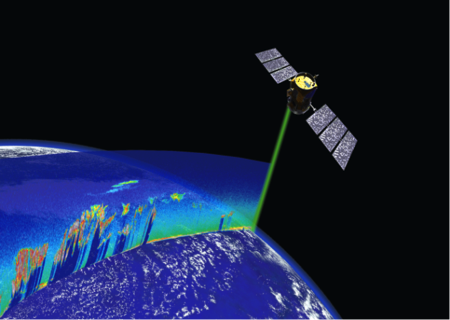Calipso-OLD - CALIPSO
CALIPSO
MISSION OVERVIEW

CALIPSO (Cloud-Aerosol Lidar and Infrared Pathfinder Satellite Observations) uses an innovative lidar and imaging system. It allows us to see natural and human-produced aerosols and thin clouds that are invisible to radar, and sometimes even to the human eye. The global 3-D perspective from CALIPSO gives us a unique chance to learn about height, amount, and type of aerosols and clouds. The satellite was launched in 2006 and is still providing scientific researchers with information to help us better understand the air we breathe, help improve our forecasts, and make predictions about climate changes.
CALIPSO is a joint venture between NASA (the United States of America's space agency) and CNES (the French space agency).
To Understand Climate We Need to Understand Clouds and Aerosols
At any time, clouds cover over 60 percent of the Earth’s surface. Some clouds block sunlight from our planet, creating a cooling effect. Conversely, other cloud types prevent infrared radiation from leaving Earth, which has a warming effect.
Today, scientists know that clouds and aerosols (airborne particles like dust) play critical roles in regulating Earth’s climate. If we want to accurately predict the future course of the global climate, we need to better understand the character of clouds and how they are influenced by aerosols.
CALIPSO has proven to be a historically significant satellite, and defying projections of its life expectancy, continues to gather important information about clouds and aerosols. Along with CloudSat, it is the first satellite to actively take long-term measurements of clouds and aerosols.
How does CALIPSO measure clouds and aerosols? It sends pulses of energy towards Earth’s surface using Lidar, which is similar to radar but uses light instead of microwave energy. These pulses of light bounce off particles in the atmosphere, helping to determine the properties of a target – ground, sky, aerosols, or cloud – and the distance to these particles. This allows scientists to observe vertical profiles of clouds and aerosols and create stimulating visualizations of what’s floating above us in the atmosphere.






